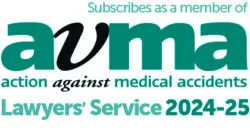
The Real Deal – Employees’ Pay
In real terms, pay is dropping.
A recent report from the Institute for Fiscal Studies (published on 20th September 2017) has shown that public sector pay is approaching “historically low levels”.
New figures show that as a result of Government pay freezes and caps, the average NHS health worker has suffered a real terms cut of almost £2,000 over the past 7 years.
The median average salary in the NHS in June 2017 was £31,526 compared with £29,132 in August 2010. Factor in inflation, and this computes to a real terms cut of £1,985 per year.
The reality in the private sector is worse with wages down by 5% since 2008, compared with a drop of 4% in the public sector. However, initially after the recession, public sector pay grew faster than private sector pay. As a result of restraint in the public sector since 2010, the gap in pay between the public and private sectors has now returned to pre-2007 levels.
This squeeze on living standards isn’t likely to improve anytime soon either, with inflation up due to the drop in the pound following the Brexit vote in June 2016.
Furthermore, the IFS estimated that the decision to lift the cap and increase wages, in line with either inflation or private-sector earnings, would be likely to cost the UK an extra £9bn by 2020 alone.
The Government is however under increasing pressure to lift the cap and announced a wage rise for police and prison officers, but the squeeze still continues for all other areas of the public sector.
Factor into this, the findings of the Low Pay Commission in their recent report (published on 17th September 2017). This report found that more workers than ever are paid the minimum wage, or close to it. In addition, as many as 1 in 5 low-paid workers may actually be paid less than they are entitled to and this equates to between 305,000 and 580,000 workers. This is at its highest immediately after an uprating of the National Minimum Wage and declines by around half over the 3-6 months that follow.
On top of that, women are more likely to be paid less than minimum wage and are also least likely to complain about underpayment. Two-thirds of those who are underpaid are female. This proportion is known because of HMRC investigations, rather than complaints made by those women who consider that they are being underpaid.
Gender pay gap reporting may help in relation to this, but only for those whose employer has a headcount of 250 or more. So women in low-paid work, working for small organisations, seem to be offered little protection.
While ever inflation continues to rise and uncertainty around Brexit persists it seems likely that pay increases on the face of it could continue to amount to pay cuts in real terms and the squeeze on public sector workers in particular will continue.
Hannah Boynes – Solicitor
For further information on Employment Rights please visit our website or call 0033 3344 9603 and ask to speak with our Employment Rights team.










